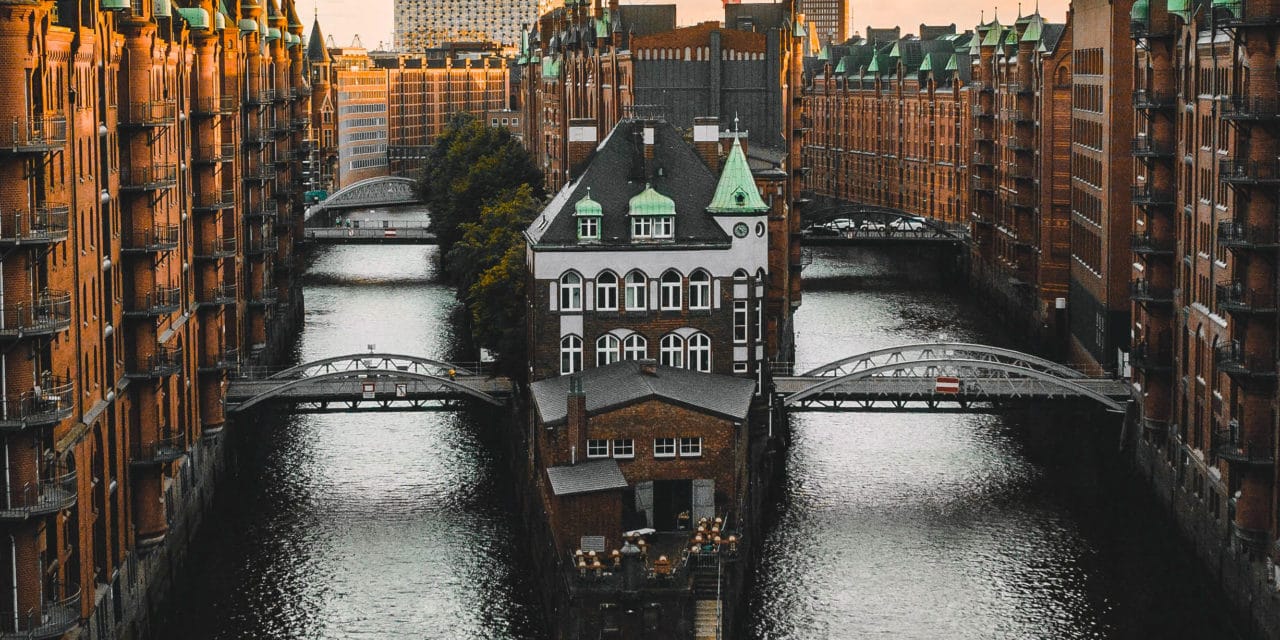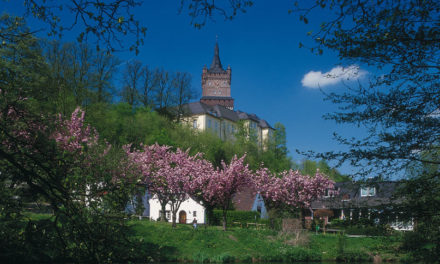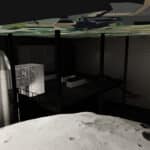Whether it's Miniatur Wunderland, a moated castle or a traditional ship harbour – a detour to the Speicherstadt should not be missed on any visit to Hamburg. Since July 2015, the Speicherstadt has been Germany's 40th UNESCO World Heritage Site, together with the Kontorhaus district, including the Chilehaus.
The Speicherstadt is the largest warehouse ensemble in the world and extends over around 26 hectares between Baumwall and Oberhafen. The complex was built between 1883 and the end of the 1920s on thousands of oak piles and has been a listed building since 1991.
Nowadays, the buildings in the Speicherstadt are home to leisure activities such as the Miniatur Wunderland, which is popular with young and old, or the Speicherstadt Museum, where you can learn about the history of today's World Heritage Site before exploring it yourself. In the premises of the Hamburg Dungeon, you can take a spooky journey through Hamburg's history. The German Customs Museum, which tells the story of customs and smuggling, the International Maritime Museum with thousands of ship models and nautical charts, or the Prototyp Car Museum with horsepower rarities from 70 years of automotive history are always worth a visit. During a visit to the coffee roastery, you can learn more about the world of the dark bean in a former original coffee warehouse and even taste freshly brewed coffee from different countries. There is also a lot to experience outside the old warehouses: barges sail in the long canals between the rows of buildings and the traditional ship harbour in Sandtorhafen attracts visitors with up to 20 historic ships. When it was opened in 1866, Sandtorhafen was the city's first modern harbour basin in which ships could be loaded and unloaded directly on the quay.
By far one of the most popular photo motifs in the Speicherstadt is the moated castle at the end of the Dutch Brooks, which is now used as a tea office with gastronomy. It forms the centre of the third construction phase of the Speicherstadt and was built between 1905 and 1907. At that time, it was the only place in the Speicherstadt that was allowed to be inhabited. On the one hand, this regulation served to prevent smuggling in the free port area, and on the other hand, the Speicherstadt is not sufficiently protected in the event of a storm surge. Due to its exposed location, the Fleetschlösschen on Brooktorkai is also a popular photo motif. Over time, it was used as a customs building, fire station and public toilet, among other things. One of the more well-known buildings in the Speicherstadt is also the water police station on the Kehrwiederspitze – the building, which was built in 1902, is the outdoor filming location of the ZDF television series "Notruf Hafenkante". Last but not least, the "Speicherstadtrathaus", the main building of Hamburger Hafen und Logistik AG, built between 1902 and 1904, is also one of the eye-catchers in the Speicherstadt. The administration building was built according to designs by Johannes Grotjan and the company Hanßen & Meerwein, who also played a major role in the Hamburg City Hall.
History of the Speicherstadt
In 1871, Hamburg joined the German Empire, but the city remained a customs exclusion area. This privilege was to change with the customs union treaty agreed on 25 May 1881: the zone in which neither customs duties nor import sales taxes had to be paid was limited to the area of the free port. The final annexation of Hamburg to the German Empire was planned for 15 October 1888 – there were still about seven years left to create new storage capacities around the free port.
Before the construction of the office buildings could begin in 1883, however, around 24,000 people had to leave their homes and about 1,100 houses had to be demolished. Alfred Lichtwark, former director of the Hamburger Kunsthalle, coined the phrase "Free and Demolition City of Hamburg" during this time. Previously, there were simple houses of the poor on the Kehrwieder and baroque luxury houses of the rich on the wall frame. The wealthier families converted their summer residences on the Alster and Elbe rivers into main residences, while the people of the slums were to move to the newly built workers' quarters that were built in Barmbek and Hammerbrook, for example. However, since a large part of the population was dependent on work at the port and extensive means of transport were not to be introduced until the construction of the subway in 1912, the less well-off moved to the slums of the southern part of the city.
On 29 October 1888, Kaiser Wilhelm II officially inaugurated the Speicherstadt on the so-called "Kaisertag", but only the first construction phase was completed at that time. With an interruption due to the First World War, the Speicherstadt was completed in 1927. Blocks Y and Z, for which the site of the Ericusspitze was intended, were no longer built. Operation Gomorrah in the Second World War destroyed the western part of the Speicherstadt, and reconstruction was completed in 1967. On 1 January 2013, a Hamburg era finally came to an end: the free port, which accounted for around a fifth of Hamburg's port area, was dissolved.





















